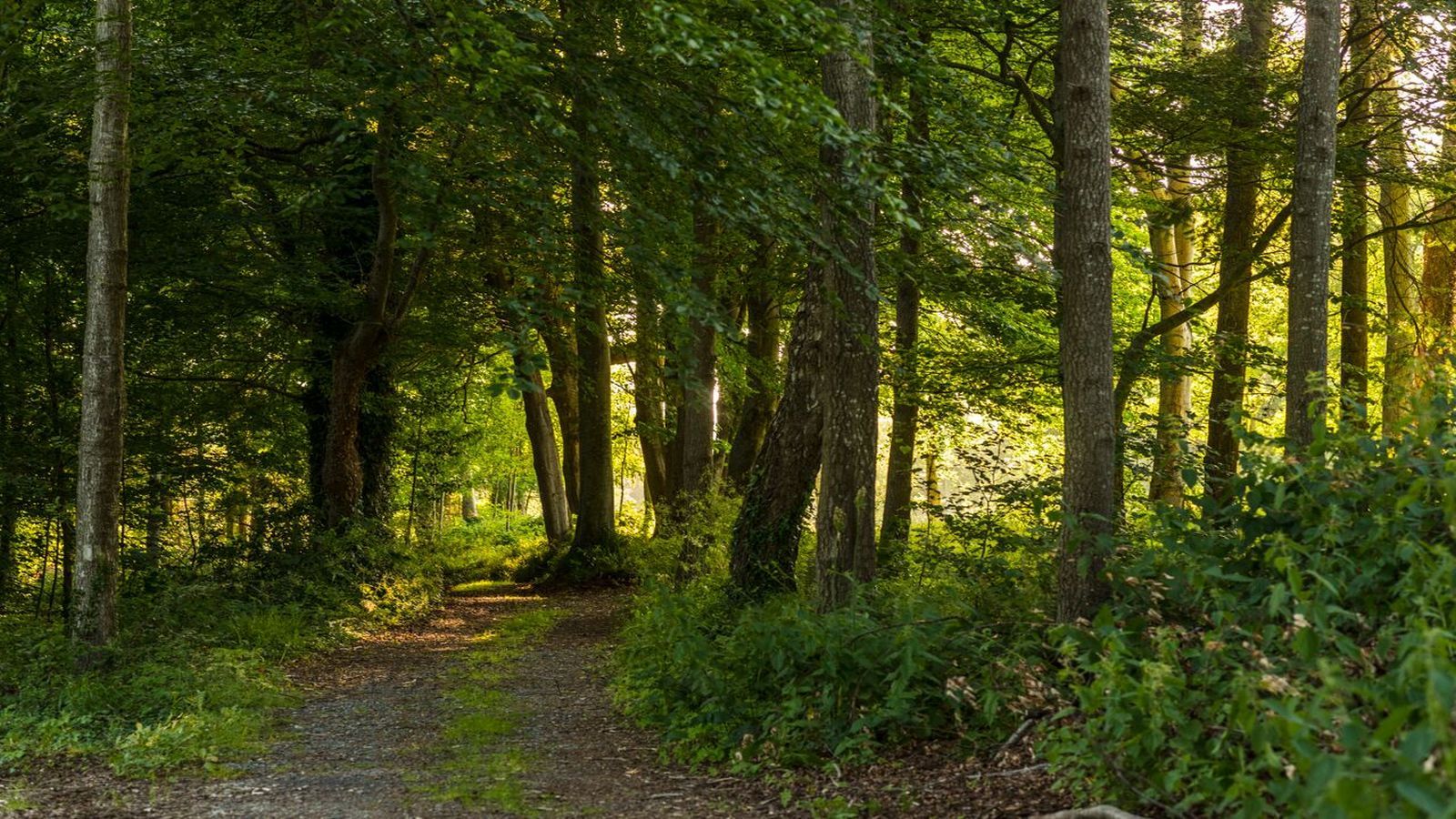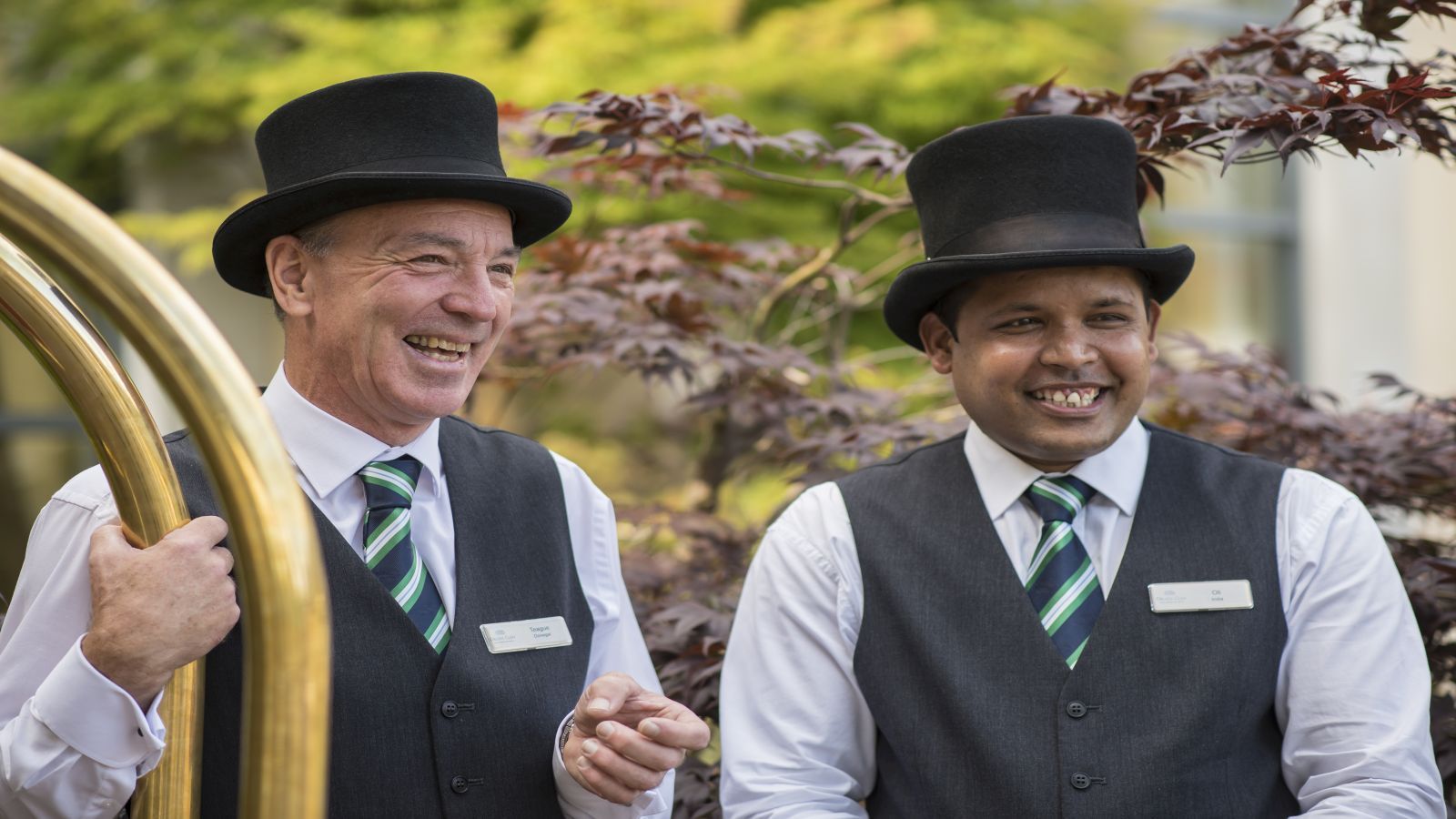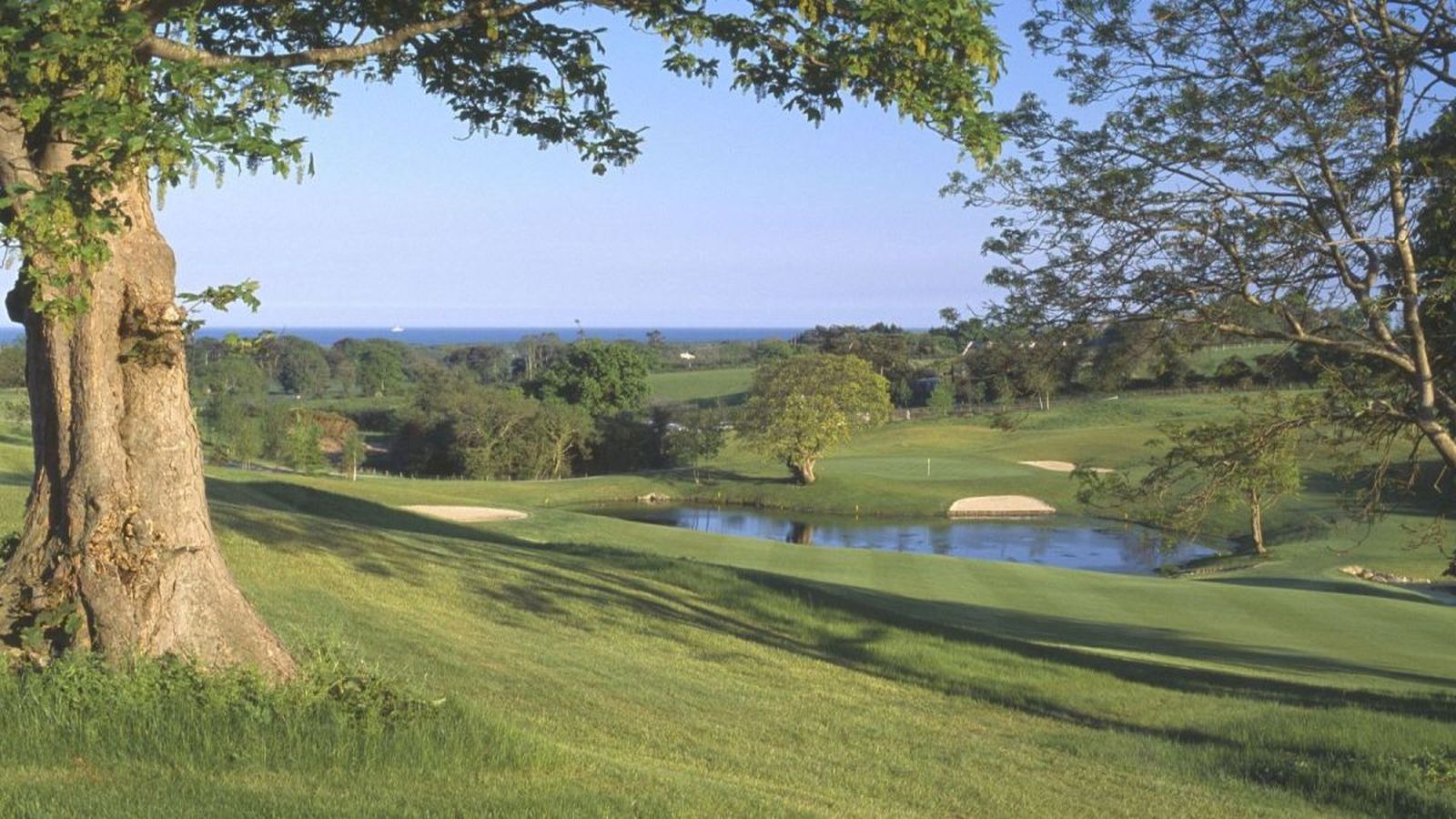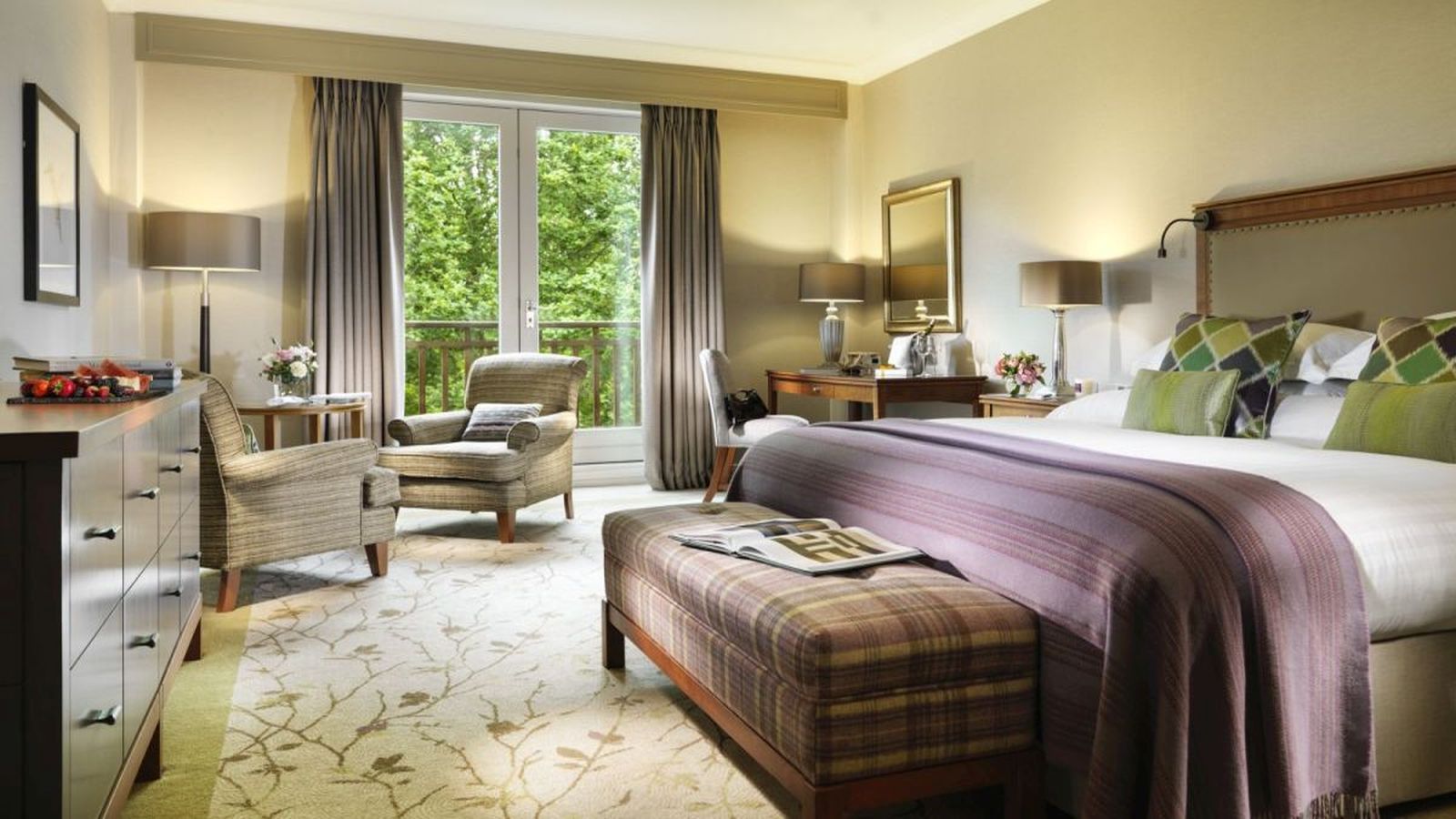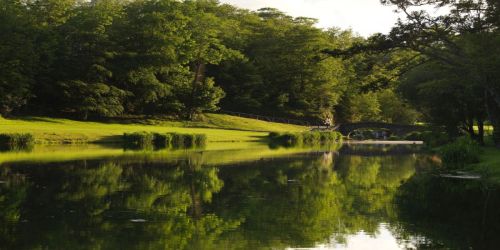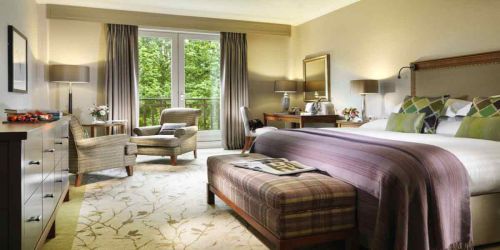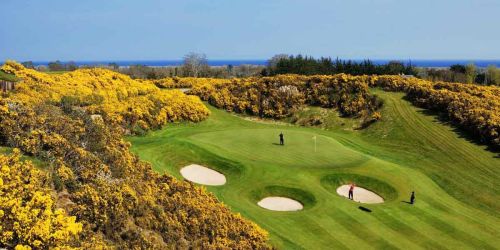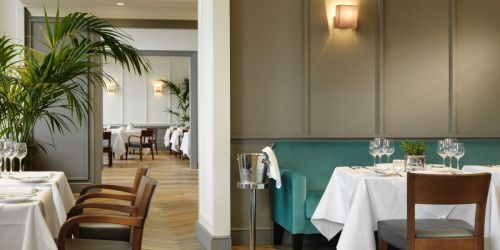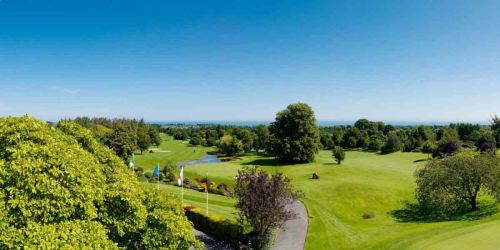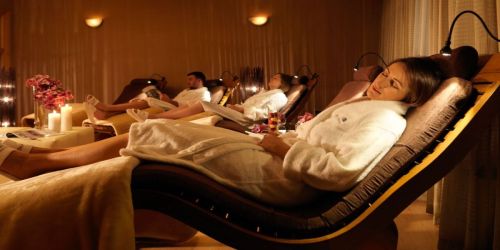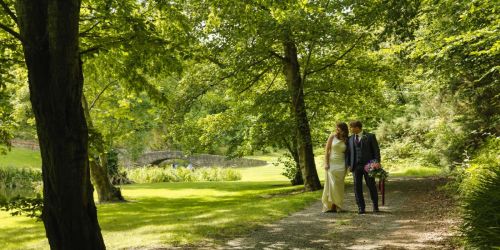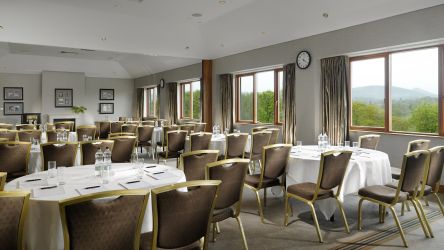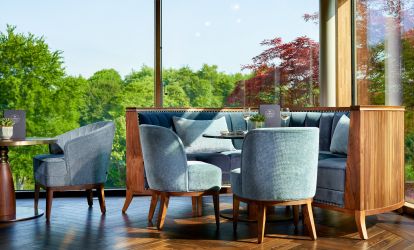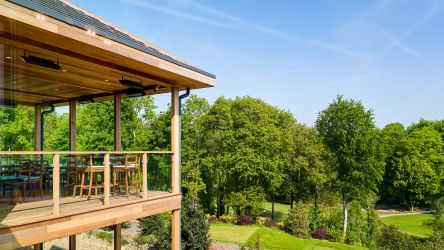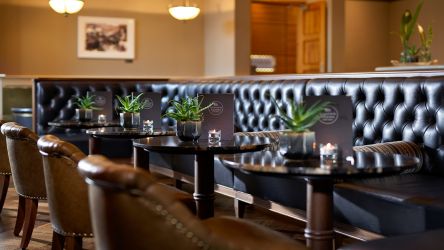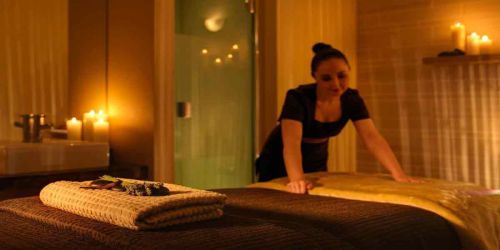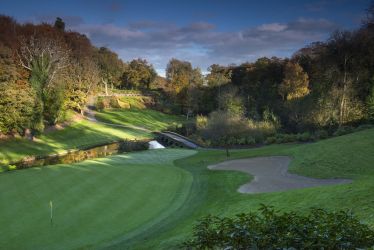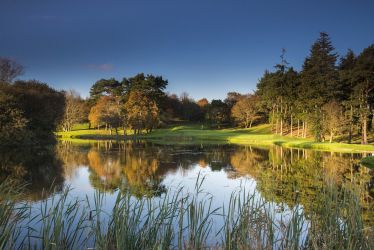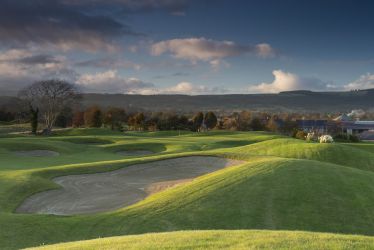MASTERS MUSINGS - TALES OF A MASTERS FANATIC
06 April 2021It’s probably the most written about golf Tournament in history, and arguably the best loved. For many golfers worldwide it is the ultimate bucket list item. Most do not get the chance to go but for those who do it is a totally unforgettable experience.
Much is known about its genesis, but it might be useful to have a quick look back at some of its more interesting history. The men behind the creation of Augusta National and the Masters.
Augusta National was the brainchild of the legendary Robert Tyre (Bobby) Jones probably the most famous amateur golfer who has ever lived. Jones was born in Atlanta Georgia, on St Patrick’s Day 1902, weighed 5 lbs at birth and was not expected to live past his fifth birthday. But he did and established a legacy unequalled in the sport of golf.
There are three Golf Clubs in Georgia that claim a piece of the Jones legacy. East Lake located in a rundown area of downtown Atlanta; Atlanta Athletic Club (AAC) located in its suburbs, and of course Augusta National. During the 60’s the area around East Lake deteriorated due to urban decay and white flight, so as part of that flight, the members of East Lake including Jones, moved to AAC in 1967.East Lake fell into disrepair and was mostly forgotten
However, in 1993 a charitable foundation purchased East Lake and rebuilt it in homage to Bobby Jones, restoring it to its former glory and in the process regenerating the local area. In 2005 it hosted the Tour Championship, and it has remained there ever since, now also incorporating the FedEx Cup finale.
If you ever get the chance to play or even visit these clubs, make sure to visit their trophy rooms which are shrines to the great man. It is a wonderful experience.
Jones started golf at the age of 6, playing at East Lake. He became enchanted with the game and progressed quickly through the amateur ranks winning the Georgia amateur in 2016 and the Southern amateur a year later. He came to national attention in 1923 by winning the US Open.
Between the ages of 19 and 28 he won 13 majors and in 1930, went on to achieve the most remarkable feat of all which came to be called “The Grand Slam” a feat that has never been equalled.
In that year he won the Open Championship, the British Amateur, The US Open and the US Amateur. Jones could not play in the PGA Championship as it is the only major that is reserved exclusively for professional golfers. Between 1920 and 1930 Jones competed in 45 events, winning 21 and finishing second seven times. Jones remained an amateur all his life but quit playing competitive golf soon afterwards. During World War II he joined the US Air force, was based in England for a time and participated in the Normandy landings on D- Day. His health began to deteriorate shortly afterwards, and he developed a serious nerve disorder in his spine, a condition that stayed with him until his death in 1971.
Bobby Jones & The Claret Jug / Tiger Woods and the incredible scenes at East Lake
Coincidentally, it was his loss in the first round of the 1929 US Amateur at Pebble Beach that brought him into contact with golf course designer Alister Mackenzie (think St Andrews Old, Pebble Beach. Royal Melbourne, Cypress Point, Lahinch GC, Cork, Galway, Nenagh, Muskerry Golf clubs).
Jones decided to hang around Monterey for a bit, and it was there that he met Makenzie who was redesigning Pebble at the time. Jones had recently seen a tract of land; an old nursery called Fruitlands in Augusta and felt it was just waiting to be made into a golf course. This chance meeting with Makenzie led to him being asked to design the course at Fruitland’s, which Jones subsequently named Augusta National.So, in 1933 Augusta National opened its doors to a fine and very select bunch of Southern gentlemen, and indeed gentlemen it remained until 2012, when Condoleezza Rice, former US Secretary of State, became the first woman to be admitted to membership.
In 1934, Augusta National hosted its first professional tournament known then as the First Annual Invitational Tournament. The winner was Horton Smith. But from 1935 onwards it was referred to as the Masters Tournament, a name attributed to the other main man in the Augusta story, Clifford Roberts.
Roberts, who was a financier, came from humble beginnings and had never been to college. He made his fortune in oil speculation, and by age 29 he was christened “The Boy Wonder of Wall Street”.
Roberts became chairman of Augusta National in 1935 and remained so till his unlikely death in 1977 (he was found alongside a lake at the par 3 course with a .38 pistol nearby).
Roberts set the standard for membership of the club and ruled Augusta with an iron fist. Some of his actions are the stuff of legend. He made all the rules and woe betide anyone who broke any of them. As an example, players could only hit one ball during Tournament practice rounds, one unfortunate soul caught playing a second ball was ordered off the course and his invitation withdrawn.
On the cost of membership his answer was “If you have to ask, you have no business being a member” If you queried you annual bill (sub) your membership was not renewed.( Marcus please ignore) His relationship with Jones soured as he gradually took complete control of the Club and the Masters.
The Green jackets became the official attire of Augusta National, and they were given to Members so that patrons (fans) could get “reliable information” from them during the Tournament. Jackets could never be worn outside of Augusta National under pain of immediate suspension of membership. In 1949 the tradition was extended to include the winners of the Tournament, and Sam Snead became the first recipient of the green jacket. Winners are given the jacket to wear for a year and then must hand it back. Gary Player didn’t hand his back in 1962 but brought it home to South Africa with him. A phone call from Roberts requesting its return elicited the response from Player “if you want it you will have to come and fetch it” One of the few arguments that Roberts lost.
Clifford should never have taken his eyes off the Jacket!!!!
The Making of the Masters
While the Masters continued to gather momentum and prestige, it was the 60’s which saw it really take off in the public mind as the premier golf major. With the advent of TV, and playing on the same course each year, viewers could identify with their favourite holes on the course, and their favourite players. A happy coincidence was the arrival of golf’s charismatic Big 3. Palmer, Nicklaus and Player. These three catapulted the Tournament to a level it has remained at to this day. Player won in1961, Palmer was second; Palmer won in 1962 and Player was second. Nicklaus won in 1963; Palmer won in 1964, Nicklaus was second. Nicklaus won in 1965 with Palmer and Player tied second, and so it continued throughout the 60’s. The Masters is different from the other majors in a couple of respects. It is an invitational tournament, albeit with strict qualification criteria. It also extends invitations to the World’s top amateur golfers, this in deference to the policy laid down by its founder Bobby Jones.The Masters came even more into prominence on this side of the pond in 1980 when the swashbuckling Spaniard, Seve Ballesteros, triumphed. The gates were open and the European golfers poured through winning 11 jackets between 1980-1999. Ballesteros (2) Faldo (3) Langer (2) Olazabal
(2) Lyle and Woosnam. It was a great time for Europe.
With its increased popularity, tickets, known as badges, became like gold dust and to this day are the most sought after sports tickets in the world (I can vouch for this).Many residents of Augusta were given badges in the early days and have passed them down through the generations. It was a great PR move and got all the locals on board with the event.
The Masters Experience
Nothing prepares you for your first experience of The Masters. Augusta National is situated on Washington Road, a long thoroughfare lined with low rise retail and grocery stores and many restaurant chain outlets, a few notables being Hooters and the Outback steak house. On the right-hand side as you drive up the street at the intersection with Berkman’s Road and the Water tower lies the “public” entrance to Augusta National. A couple of hundred yards further on is the Magnolia lane entrance, used by Members and Players. The 365 acres of the golf course is surrounded by a high fence adorned with trees and shrubs. About 10 miles further down the road lies the actual town of Augusta. It was a textile/cotton mill town along the banks of the Savannah River. However, with the demise of that business the town went into decline. Recently it has made quite a comeback and has a beautiful River Walk area and a very interesting museum. There you can learn about its most famous son, the manic godfather of soul James Brown.
During Masters Week, Washington road area is alive with actors and action of all sorts. Lots of ticket touts with their cardboard signs pleading for badges. Golf fans from all over the globe mingling and exchange pleasantries. There is a camaraderie among Masters fans that is unique. Total strangers share their own special memories of golf and their favourite Masters moments. Many are regulars. Because there are no hospitality facilities inside the grounds, lots of such facilities are to be found around every
corner of every street in the immediate vicinity of the Club. Masters week is a haven for party animals. John Daly parks his Winnebago alongside Hooters and is omnipresent selling his clothing line to all and sundry. He is always good for a chat and a picture (and has happy memories of playing Druids Glen!) A new Hospitality Centre has recently been constructed alongside one the course entrances, and according to first-hand reports is the most amazing set up imaginable. The Centre caters for guests of the main sponsors, currently AT&T, IBM and Mercedes Benz. Cost per head is north of $6000 (per day).
On Tournament days the gates usually open at 08:00am. The huge car parks (free) have been filling up since dawn. As you move to the entrance everyone is friendly and alive with anticipation. Masters staff are everywhere offering help with any problem. Augusta police are also very much in evidence but are exceptionally friendly and helpful. Mobile phones are not allowed on Tournament days (although this may change) so you are invited to leave such devices at a drop off point.
Security check is next on the agenda with full airport style metal detectors etc all done with a smile.
Next is the Badge check which can entail some heart stopping moments, and then with a “have a nice day sir” ringing in your ears, YOU ARE IN!!!
This is when it hits you, as you proceed up the magnificent walkway past banks and banks of azaleas and dogwood, up past the Practice Area which is full of golfers putting the final touches. Then past the Merchandise Centre and then......and then. There it is, The magnificent sight of Augusta National
lying before you. It is hard to put into words the wonder of it all. One guest of mine just burst into tears when confronted with the sight. It does have that kind of effect.
Moving on towards the first tee, you pass the Clubhouse on your left, set out with its colourful umbrella topped tables where the Members and their guests relax. As many will tell you, the grass is even greener that you can imagine, and it comes as a surprise how hilly the course actually is. The attention to detail is extraordinary, manicured to such a degree that you will never find a weed on its 365 acres.
It is not possible to do justice to the course with words; you really must see it. One of the surprising discoveries is how close the back of 15th green is to the water alongside the Par 3 16th hole. I think we saw a few overshoots into the water at the Tournament this past November.
The Masters has its own rules for patrons (fans). On the leaflet accompanying your badge is a message from Bobby Jones, written in 1967 from which I quote
“In golf, customs of etiquette and decorum are just as important as rules governing play. It is appropriate for spectators to applaud successful strokes in proportion to difficulty but excessive demonstrations by a player or his partisans are not proper because of the possible effect upon other competitors. Most distressing to those who love the game of golf is the applauding or cheering of misplays or misfortunes of a player”
So it would be a rare thing to hear “mashed potato” or “Ba ba Booy” yells during the course of the Tournament .You can be sure that such persons would find themselves back in the car park, their badges appropriated and the true owner of the badges would be struck off the list for evermore. There are incognito officials dressed as fans that mingle and keep a watchful eye on crowd behaviour. Locals who sell on their badges (and please keep doing so) have to be very careful who they give/sell them to.
While there are rules, there are some nice touches too. You can bring your own folding chair and place it at any available vantage point on the course, particularly around the greens, put your name on it and it will be there all day, ready when you are. This is a popular feature especially on Sunday. You can also have your picture taken in front of the iconic Clubhouse; they put it on a swipe card which you can then download later, all for free. Food and drink are very inexpensive. A pimento cheese sandwich at $1.50 and a pint of beer at $4 are a must, as is the vast Merchandise Centre where prices are normal retail. A holding centre is also provided where you can store your purchases for later in the day pick up. A visit to the course would not be complete without taking in the popular viewing areas at the 15th green and the 16th tee/green area, and the 11th green/12th tee. The visual atmosphere in this area is incredible. There are no electronic scoreboards so all updates done by hand in the old fashioned way. Interestingly, there is no viewing stand at the 18th green, just the natural rising terrain.
Refreshment areas are well located around the course, but best get your drinking done by 5pm when alcohol sales shut down. Not to worry however the saloons on Washington road await.
Favourite Personal MomentsBig Phil
Standing as close as allowed to Mickelson in the pine straw on the 13th hole in 2010.
And watching him hit a 6 iron between two pine trees with a gap of about 12 inches, and with a carry of 187yds over Rae’s creek to a tight pin position . He hit it to about 3 feet, and in true Michelson style missed the eagle putt. However, he did go on to win his third Green Jacket. It was the greatest shot I have ever witnessed.
Sheffield Steel
Strolling into the Buffalo Wings counter in the Departures concourse at JFK airport on the Monday after the 2016 Masters enroute to Dublin. Thought I saw a familiar looking jacket hanging on the back of a Bar stool. Couldn’t be, could it? Sure enough further investigation revealed the portly figure of Chubby Chandler holding court at the Bar. And there, alongside him, the newly crowned Masters Champion Danny Willett. I couldn’t help thinking what Clifford Roberts would have made of it all. It was a lovely moment, a nice chat and a picture for the album.
Eventually Sergio!
Watching Sergio Garcia shooting a game changing eagle on the 15th, on Sunday, by hitting it to 15 feet from 192 yds to set up his first Major win in 2017. The 15th had its revenge the following year when he went in the water 5 times en route to a 13.
Memorable Masters Comments
“What a stupid I am” the response from Argentinean Roberto de Vicenzo in his broken English, after signing his score card for a 66 in the final round of the 1968 event. He shot a 65, but his marker Tommy Aaron put him down for a 4 on 17, a hole he had birdied. (In those days there was no scoring hut where officials could check the cards before they were submitted.)
A 65 would have tied him with Bob Goalby and a playoff. Goalby through no fault of his own was cast as the villain and suffered greatly afterwards. (think Stewart Cink and Tom Watson Turnberry 2009).
“Mr Palmer, you had a three on no 12” Clifford Roberts to Arnold Palmer Always enjoyed this story often told by our own John Kinsella.
It happened in the final round of the 1958 Masters. Palmer was playing a fiercely contested final round with Ken Venturi and was one shot ahead as he stood on the 12th tee.
From here I quote from the man himself
“My tee shot at twelve [155 yards, six-iron] flew the green,” Palmer said, “and embedded itself in the mud between the fringe and back bunker. To me, an obvious drop without penalty. But the official standing there, Arthur Lacey, said, ‘It’s only half-plugged.’ I said, ‘That’s like being half-pregnant.’
“Because of the heavy rain, just for the Sunday round, we were playing wet-weather rules ‘through the green’. I knew I was right. ‘I’m going to play two balls,’ I told Lacey. He said, ‘You don’t do that here."
Palmer’s shot barely moved the indented ball into a puddle of casual water, from where he received an uncontested free drop. But he required a chip and a couple of putts from there for a double-bogey 5. Returning to the embedded scratch, he dropped another ball over his shoulder. Rolling nearer the hole twice, it was eventually placed, and this time he got up and down for 3. “We’ll let the rules committee sort it all out when we get in,” he told Venturi. “I agreed with Palmer on the original call,” Venturi said. “That ball was absolutely embedded. But he didn’t declare he was playing a provisional until after he made the double bogey. To me, that was wrong. Dead wrong.”
Arnold said, “I did declare the second ball, to Lacey, before I played the first. Ken didn’t hear me.” There is no record of Lacey’s response! Probably would not be audible from Outer Mongolia!
At the 15th green Clifford Roberts told Palmer that he had made a 3 on 12 at which point Venturi fell apart. Palmer went on to win. Roberts was in effect a one-man rules committee.
“The first time I played The Masters, I was so nervous I drank a bottle of rum before I teed off. I shot the happiest 83 of my life”
Chi-Chi Rodriguez, 14-time Masters Competitor
Seve Ballesteros when asked to describe his 4 putt from 15 feet on the 16th in 1988 responded:
"I miss, I miss, I miss, I make."
Johnny Miller
"On the fifteenth hole I started thinking how I'd look in the green jacket, the next thing I know, they're giving it to Charley Coody." Johnny Miller, who led by two with four holes to play in 1971 only for Coody to win by two shots.
Twinning with Augusta:
The late much loved Captain of Druids Glen Tim O’Connor to Augusta National Chairman Hootie Johnson.........“in view of your total lack of response to my invitation to twin Augusta National with Druids Glen, I have to inform you that I am now withdrawing the invitation” Finally, I hope to renew acquaintance with Augusta National in 2022 So, from the Augusta of Europe to the Augusta of Georgia
Cheers
Oliver McCann
Thank you so much Oliver for this incredible read!!
